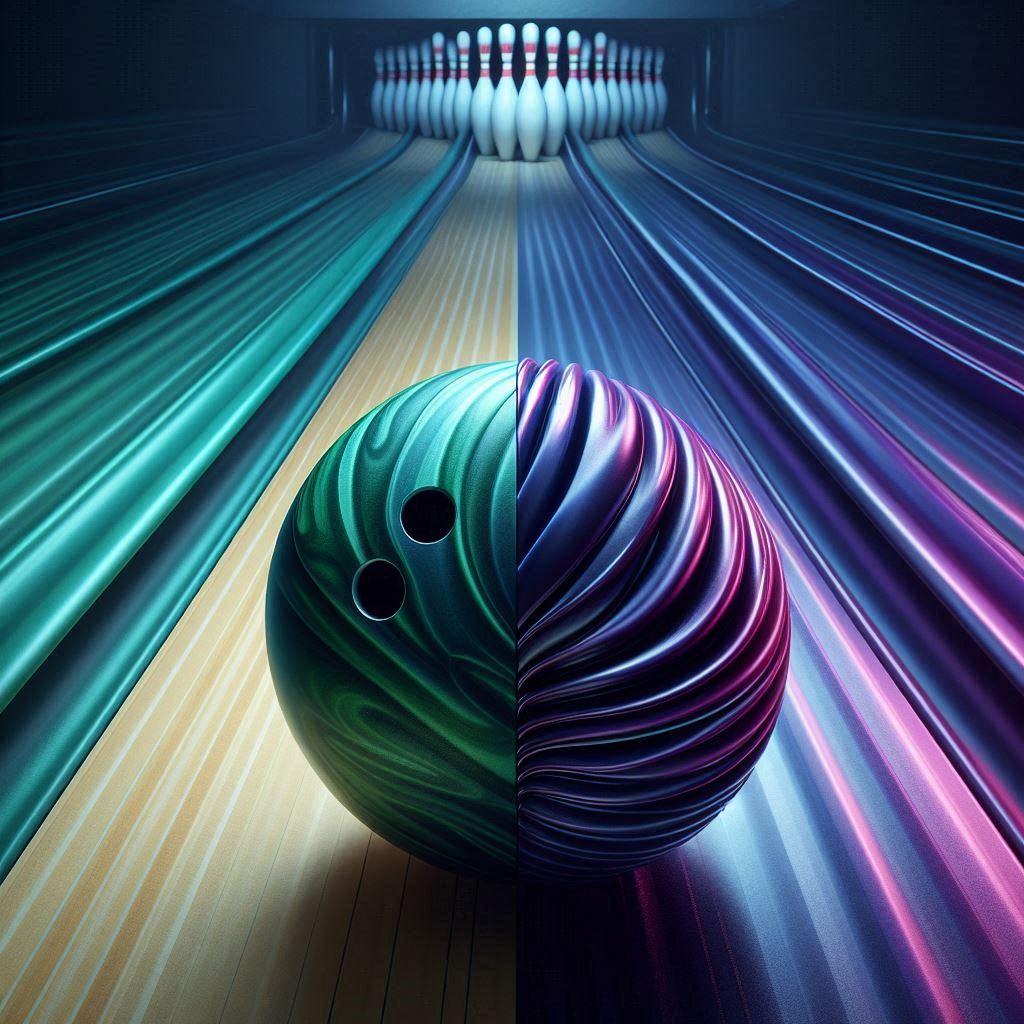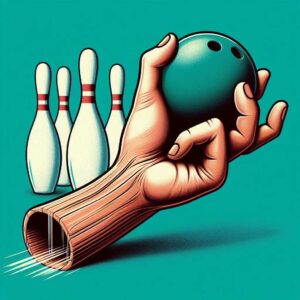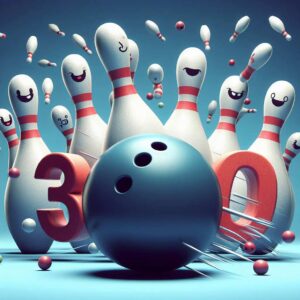For any serious bowler looking to take their game to the next level, understanding the nuances of bowling ball design and dynamics is crucial. While ball selection may seem straightforward on the surface, the debate between symmetrical and asymmetrical bowling balls has raged for years among dedicated players and coaches alike. These two distinct ball designs produce vastly different motion characteristics that can profoundly impact your performance on the lanes. In this comprehensive guide, we’ll delve into the intricate differences between symmetrical and asymmetrical bowling balls, exploring their core designs, motion patterns, ideal applications, and how to maximize their potential.
What are Symmetrical Bowling Balls?
At their core (quite literally), symmetrical bowling balls feature an even distribution of mass throughout their internal weight blocks or discs. This balanced design ensures that the ball’s center of gravity remains consistent, resulting in a smooth, arcing ball path as it travels down the lane. Symmetrical balls are often praised for their exceptional predictability and control, making them a popular choice for bowlers seeking a more straightforward approach to the pocket.
The symmetric nature of these balls means that the core’s weight is evenly distributed, allowing for a balanced rotation as the ball spins. This even rotation translates to a consistent, gradual arc or curve as the ball approaches the pins, minimizing the potential for excessive hook or deflection. Consequently, symmetrical balls are often seen as the ideal choice for beginners or those who prefer a straighter, more controlled style of play.
What are Asymmetrical Bowling Balls?
In contrast, asymmetrical bowling balls feature an intentional imbalance in their core design, with the internal weight blocks or discs strategically positioned to create an uneven distribution of mass. This asymmetric layout causes the ball’s center of gravity to shift during its rotation, resulting in a more pronounced backend hook or snap as it approaches the pins.
The core of an asymmetrical ball is intentionally designed with a mass bias, meaning that the weight is unevenly distributed within the core. This imbalance causes the ball to rotate in an imbalanced manner, generating a more prominent backend reactive motion as it travels down the lane. As the ball rolls, the uneven weight distribution creates a dynamic shift in the core’s axis of rotation, producing a dramatic flaring or hooking motion in the later stages of the ball’s path.
Asymmetrical balls are particularly favored by rev-dominant players who rely on generating a high rev rate (ball revolutions per minute) to create a more pronounced backend hook. This increased angularity and hooking potential can be advantageous when attempting to handle challenging lane conditions or when a more aggressive ball motion is desired.
Key Differences in Motion: To better visualize the contrasting ball paths, let’s compare the motion characteristics of a symmetrical ball against an asymmetrical one. Symmetrical balls tend to follow a smoother, more predictable arcing trajectory, gradually curving toward the pocket with a consistent, controlled motion. This arcing path is the result of the even weight distribution within the core, allowing for a balanced rotation that translates to a predictable ball path.
On the other hand, asymmetrical balls exhibit a more dramatic backend hook or snap as they approach the pins. The uneven weight distribution within the core causes the ball to rotate in an imbalanced manner, generating a more pronounced flaring or hooking motion in the later stages of its path. This backend reaction is amplified by the ball’s rev rate, with higher revs accentuating the asymmetric core’s impact on the ball’s motion.
When to Use a Symmetrical Ball:
While there’s no definitive “better” design, each ball type excels in specific situations and lane conditions. Symmetrical balls are often the preferred choice when control and a reduced hook or deflection are desired. These scenarios may include:
Flatter or drier lane patterns: On lanes with less oil or a more consistent distribution, a symmetrical ball can provide a straighter line to the pocket, minimizing the risk of overcooking or burning up too early.
For beginners or low-rev players: Bowlers who are still developing their rev rate or prefer a more controlled approach may find symmetrical balls easier to manage, as they produce a smoother, more predictable motion.
Specific lane conditions: In certain situations, such as when the lanes are particularly dry or burned up, a symmetrical ball’s controlled motion can be advantageous in navigating the challenging conditions.
When to Use an Asymmetrical Ball:
On the flip side, asymmetrical balls shine when bowlers need to generate extra hook or angularity to navigate specific lane conditions or capitalize on their rev-dominant playing style. These scenarios may include:
Over/under conditions: When lanes exhibit a drastic transition between dry and oily portions, asymmetrical balls can help amplify or reduce axis rotation, allowing for better adaptability to the changing conditions.
For rev-dominant players: Bowlers who generate a high rev rate can harness the backend hooking potential of asymmetrical balls, allowing for increased angularity and pin-carrying power.
Specific lane conditions: On heavier or longer patterns, where more aggressive ball motion is required to handle the extended oil, asymmetrical balls can provide the necessary backend response.
Coverstock and Core Interaction: It’s important to note that while the core design plays a crucial role in determining a ball’s overall motion characteristics, the coverstock compound and its interaction with the core also significantly impact performance. Different coverstock formulations, such as solid reactive, pearl reactive, or hybrid covers, can amplify or mitigate the effects of the core’s symmetry or asymmetry.
Solid reactive coverstocks, for instance, tend to create more friction and generate a stronger backend reaction, potentially enhancing the hooking potential of an asymmetrical core. Conversely, pearl reactive covers are known for their earlier and smoother arcing motion, which may complement the controlled characteristics of a symmetrical core design.
Additionally, the core’s particle density and material composition can further influence its interaction with the coverstock. Denser cores, such as those made from tungsten or other high-density materials, can increase the overall hitting power and pin-carrying potential of the ball, while lower-density cores may offer a more gentle and controlled motion.
Poring over Layout Options: Beyond the core design and coverstock, skilled bowlers and pro shop operators can fine-tune a ball’s performance by adjusting various layout factors. These include pin positioning, weight holes, bore sizes, and surface adjustments like dull or polished finishes.
For instance, strategically positioning the pin closer to or farther from the core’s mass bias can enhance or reduce the asymmetric core’s effects on the ball’s motion. Similarly, adjusting the bore size or surface finish can manage the ball’s overall response, allowing bowlers to dial in their desired motion characteristics for specific lane conditions or playing styles.
By carefully considering the interplay between core design, coverstock, and layout factors, bowlers can truly unlock the full potential of their equipment and optimize their performance on the lanes.
Closing Thoughts: In the eternal quest for bowling supremacy, understanding the intricacies of symmetrical and asymmetrical bowling ball designs is paramount. While there is no definitive “better” option, each design offers distinct advantages and caters to specific playing styles and lane conditions.
Symmetrical balls excel in providing controlled, predictable motion, making them ideal for beginners, straighter styles of play, or when navigating particularly challenging lane conditions. Conversely, asymmetrical balls thrive in situations where increased hooking potential and backend angularity are desired, catering to rev-dominant players and accommodating more demanding lane patterns.
Ultimately, the key to success lies in building a well-rounded arsenal that encompasses both symmetrical and asymmetrical options. By experimenting with different core designs, coverstocks, and layout configurations, bowlers can unlock the full potential of their equipment and develop the versatility to adapt to any lane condition or playing scenario.
Remember, mastering the art of bowling is a continuous journey, and understanding the nuances of ball design is just one piece of the puzzle. Embrace the challenge, stay curious, and never stop exploring the intricate dynamics that separate the good from the great. With dedication, practice, and a willingness to experiment, you’ll be well on your way to unlocking your true bowling potential.
Embrace the challenge with an inquisitive mindset. Remain curious about every nuance of ball motion and dynamics. Never stop tinkering, tweaking, and analyzing to extract every last pinfall-crushing advantage from your gear. With dedication to the craft, disciplined practice, and a willingness to experiment, you’ll continually elevate toward unlocking your true bowling potential.
The most masterful bowlers flow between symmetric serenity and asymmetric fury with ease. They wield these contrasting ball motions as brushstrokes in their high-scoring artistry on the lanes. Will you etch your name among their ranks? The path lies ahead, cylindrically represented by the symmetrical and asymmetrical orbs at your disposal.
Here is how I would finish out the article starting from “Which will you choose for your next immortal performance?”:
Which will you choose for your next immortal performance? The symmetric ball’s confident, controlled arc? Or the asymmetric beast’s jaw-dropping, scoreboard-shattering pyrotechnics?
No matter your weapon of choice, one truth remains: There has never been a better time to be a student of bowling ball design and dynamics. The modern era is a renaissance for the science and art of creating devastatingly awesome ball motion.
Cutting-edge particle technology allows core designers to engineer shapes, densities, and mass biases that would have seemed impossible just a decade ago. Chemists continue unlocking new compounds to craft revolutionary coverstock formulas that enhance each core’s potential.
And pro shop professionals have elevated finely tuned layouts to a true craft form. Weight holes, pin positions, surface adjustments – every minute detail is a brush stroke in their master pursuit of squeaking out that last elusive revolution.
The buffet of high-performance symmetrical and asymmetrical options has never been more deliciously overwhelming. For the insatiably curious bowler willing to experiment, analyze and master every nuance, there is a proverbial ball – or balls – purpose-built to dominate any condition.
So get out there and explore. Chase that legendary hook or laser-locked pivot line. Tinker and tune until your physical game aligns with your mental mastery of equipment knowledge. Become the bowler who simply out-balls and out-prepares the competition, no matter what those kicks serve up on any given night.
After all, fortune may favor the brave…but it absolutely swoons over those who deeply understand bowling ball symmetry and asymmetry. Embrace these designs, and the strikes, titles and legacies will surely follow.
The lane is waiting for your next immortal performance. Whatbal(l)s will you choose to etch your greatness?
- Reiterating that there is no definitively “better” ball design, but rather different tools for different styles/conditions
- Highlighting how technology and innovation continues advancing ball design and motion potential
- Encouraging bowlers to deeply understand equipment nuances to elevate their preparation and ability to win on any pattern
- Ending with a motivational call to action for bowlers to embrace the opportunities provided by symmetric and asymmetric balls to chase greatness on the lanes.





